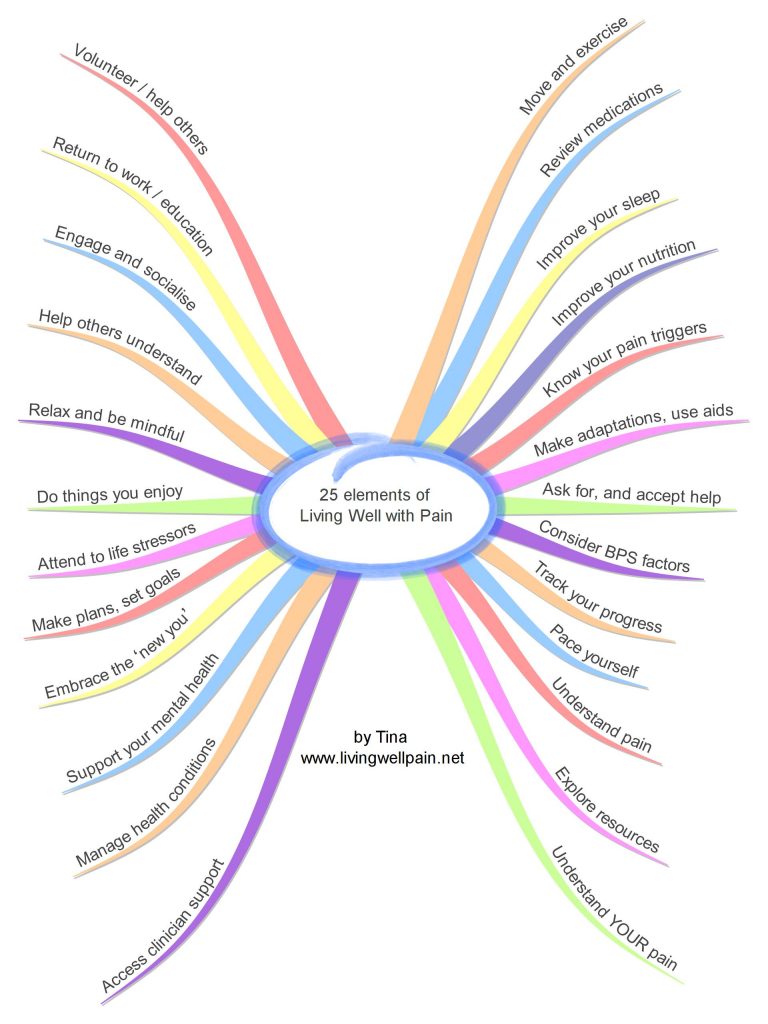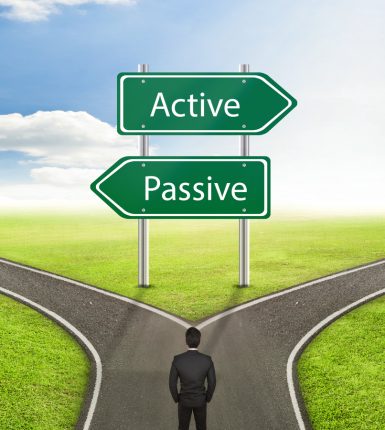Most of my life living with persistent pain is spent beyond the clinic door. For healthcare to be truly effective for me it must involve knowledge and skills that I can transfer to my everyday life. It must empower me and improve my self-efficacy and independence skills.
Although this post largely centres on my physiotherapy care, as that has been the care that has been most dominant in supporting me to live well with persistent pain, the principles apply to all other health care.
Just over ten years ago I experienced a life-changing manual handling injury. My L5-S1 disc prolapsed, compressing my S1 nerve root. I have lived with persistent neuropathic (sciatic) nerve pain and back pain ever since.
In addition to this ‘primary’ persistent pain condition I have also experienced impingements in both my shoulders. I’ve had periodic resultant symptoms for the last 9 years, sometimes very long lasting.
I would like to say at the outset that there is no intended criticism of any of my care in this post. Every patient is an individual, and what has and hasn’t worked for me will be quite different to what does or doesn’t work for others. My persistent pain presentation is unique to me and is complex.
Effective care for persistent pain

I have travelled a long journey of rehabilitation, supported by a significant number of healthcare professionals. Although I have spent a combined large number of hours in the same room as healthcare professionals, I have spent many, many more hours living with my persistent pain condition on my own. I estimate the time I have spent in the same room as a clinician as 0.008% of my waking day time since my injury, probably less.
Care for my persistent pain condition that is only effective during the hours I am with a clinician is of minimal value to me. Effective care for me must include it having an impact beyond the clinic doors, and beyond that episode of care.
For the first few years my persistent pain healthcare interventions largely centred around medications, injections, surgery and very simple physiotherapy exercises. I understand this as a ‘medical model’ of care. Approximately four years after my injury I started to be treated in a more holistic and functional way. I understand this as a ‘BioPsychoSocial’ model of care.
The more holistic and functional approach was much more successful for my persistent pain condition.
My pain, and resultant disability, has improved to some extent over time. I believe it is largely the changes that I personally have made to my life, and continue to make, that have enabled me to reduce my pain and disability. These changes have meant I am able to live well with persistent pain.
There is no doubt that physiotherapy has helped and enabled me to make those changes and continues to do so.
‘Standard’ episodes of care

For the first 3 years following my manual handling injury I was treated for my persistent pain with a number of similar episodes of physiotherapy care. I think of these as ‘standard’ episodes of care.
I have written about my early physiotherapy care HERE.
I believe this physiotherapy care fell mainly within a ‘medical model’. I can remember being given some very basic explanations of my physical condition, and some very basic exercises to do. I can also remember discussing medications.
I have no idea looking back if these episodes of care had much, if any, impact on my persistent pain situation at the relevant time. I don’t remember them being particularly helpful.
I can honestly say that there has been nothing about that these episodes of care that I have taken forward in dealing with my life with persistent pain. I don’t look back and think about those sessions, reflect on what I was taught in them, or apply any learning to my everyday life. They haven’t helped me cope day to day with my emotions around living with persistent pain. I didn’t leave them with a better, or in fact any, understanding of the complexity of pain. I didn’t gain any transferable skills, and I wasn’t shown how to adapt or extend any exercises taught.
There was little in those ‘standard’ physiotherapy episodes of care that I feel I’ve been able to usefully utilise beyond the clinic door.
Same patient, different condition

Around the time I had back surgery, which was approximately 18 months after my original injury, I experienced my first shoulder impingement. This was quite a significant issue for me. I experienced a lot of pain and some functional difficulty. The problem lasted as a constant significant issue for around two years, and then intermittently since.
I received some physiotherapy care for this problem. Coincidentally this was from the same clinic I had received a ‘standard’ episode of care for my persistent pain condition. The episode of care for my shoulder was fundamentally similar to those I have described above as ‘standard’ episodes of care for my persistent pain.
However, for this shoulder injury that type of ‘standard’ care worked well for me.
It is perhaps difficult to understand why I found ‘standard’ episodes of care worked well for my shoulder impingement, but didn’t for my persistent pain condition. In summary I think the reasons relate to my back/sciatic nerve condition being far more ‘disabling’ and ‘invasive’ than my shoulder condition, both physically and emotionally.
Although my shoulder condition limited me doing some practical activities it didn’t cause, or even contribute to, the major life changes my persistent pain condition did. It didn’t create any ‘acceptance’ issues, or necessitate physical adaptations. It didn’t strongly challenge my emotional wellbeing and mental health.
‘Holistic’ episode of care

Approximately four years after my injury I was treated by NHS Consultant Physiotherapist Matt Low (@MattLowPT), using a Cognitive Functional Therapy (CFT) approach. It was at this stage that my persistent pain treatment moved into a more BioPsychoSocial and ‘holistic’ approach. I credit this episode of care as changing my life.
Rather than repeating in this post a description of that episode of care, I would ask that you read about it HERE or HERE. Briefly though that episode of care involved the following three Cognitive Functional Therapy strands: ‘Making sense of the pain’, ‘Pain management through functional analysis’ and ‘Supporting a healthy lifestyle’.
I believe I was supported within this episode of care by a strong therapeutic alliance between myself and Matt. I have written about my thoughts on the therapeutic alliance HERE. It was much stronger, and more effective, than I experienced during any of my ‘standard’ episodes of care.
Before attending a physiotherapy appointment (or other clinical appointment) I would often write up to one A4 page of notes which I usually gave to the physiotherapist at the beginning of the session. Writing these notes helped me think through what I wanted to say during the session. I often included the progress I had made since the last appointment, and a description of any difficulties I was currently having, and any particular support I might be seeking.
The notes appeared to be well received by my physiotherapist, and I think they helped guide the session so that I achieved support that was highly individualised and most useful to me at that time. I think these notes helped the focus of support to extend beyond the clinic door.
I have included an example of the notes I have written HERE . Although this relates to an episode of care with Matt, I also wrote the same type of notes during my ‘standard’ episodes of physiotherapy care.
I would recommend to other patients to think about what help they require from their physiotherapist in advance of all appointments, and consider writing this down. I would encourage physiotherapists to encourage patients to consider whether note writing in this way might work for them. This aspect of ‘patient skills’ has worked well for me.
I am very aware that this episode of care with Matt had a positive impact on my life well beyond the time spent within the four walls (or curtains) of the clinic. It has informed my ability to live well with persistent pain, on a day to day basis.
I detail here just three ways this holistic physiotherapy care has supported me beyond the clinic door. There are many more.
1. Pain management skills

Until my physiotherapy sessions with Matt, I had no understanding about the complexity of pain. I had no idea, for example, that negative stress, difficult emotions or troublesome mental health might impact negatively on my pain, and that positive stress, happiness and resilience could impact positively. I didn’t understand about the ‘wind-up’ of pain.
Through learning to understand about the complexity of pain, including possible causal factors, I have been able to make changes which have improved my situation.
I have written about how I manage my pain HERE and HERE.
Through the understanding I gained with Matt in the clinic, I can make daily judgements about my pain situation, and how best to optimise my condition and avoid ‘wind up’ of pain or pain flares.
I can’t get rid of my persistent pain, but using my understanding gained within the clinic I can self-manage my pain, beyond the clinic door.
2. Acceptance

I have undoubtedly been helped in coming to terms with living in daily pain through my physiotherapy sessions with Matt. However, this level of ‘acceptance’ hasn’t happened within the four walls (or curtains) of the clinic, or even within the timescales of an episode of care.
I have written about ‘acceptance’ HERE.
‘Acceptance’ is a journey, and not a goal. Every time I ‘re-visit’ acceptance, I think about and utilise the learning from my physiotherapy sessions to further emotionally process my situation and move forward once more. That learning, and those memories, truly help in these often-difficult times.
The information given to me by Matt, both in terms of understanding complex pain and how MY body has been affected, and in terms of understanding how to manage my pain, has proved invaluable. That learning within the clinic has supported my journey of ‘acceptance’, beyond the clinic door.
3. Making physical adaptations

In order to improve my pain situation, and to live the best life I can, I have made many physical adaptations to my house, garden, car, workplace etc.
For example, I have bought many different cushions to help ease my sitting pain. I have cushions I use when travelling, I have various cushions in my different workplaces, and various cushions around my home and in my car. I have adapted my garden to make it easier to manage and I have a wide range of wheeled bags that support my difficulty in lifting.
In general, if there is something that I find difficult to do then I will try and make an adaption / adjustment to help me do it.
However, this wasn’t the case during the first few years following my injury, when I was being treated within ‘standard’ episodes of care. I was empowered to start to make adaptations through Matt working with me functionally and encouraging me to think ‘outside the box’. He taught me to consider physical situations that were causing me pain, and to think of different ways round those situations. He taught me to ‘listen’ to my body.
Matt made some suggestions for physical adaptions I could make in my life outside the clinic door, and I have continued making adaptations ever since.
Individualised care

It may appear that I am saying that all physiotherapy episodes of care should reflect the holistic episode of care I have described, but this isn’t my view. I believe that the type of care, and the skills and experience of the physiotherapist, should be matched to the individual patient, and their presenting condition.
All patients have their own unique presentation of symptoms, and their own unique psychosocial factors. Reflecting on my ‘standard’ episodes of care for my persistent pain, I would suggest that my treatment was not sufficiently individualised to either me as a person or to my presenting condition.
Unfortunately I had to undergo a number of similiar ‘standard’ episodes of care before eventually being referred to a physiotherapist who took a more individualised and holistic approach to my care
I believe that my pain and resultant disability could have been less if my physiotherapy care had been more individualised and better matched to me earlier in my pain journey.
I could have been enabled to live life well beyond the clinic door much sooner. I wish I had.
Effecting change beyond the clinic door

I live with persistent pain 24 hours a day, 365 days of the year, not just when I am within the four walls of a clinic or within an episode of physiotherapy care. I will likely live with pain for the rest of my life.
As a persistent pain patient I cannot be, and do not want to be, treated by a physiotherapist or other clinician every day of my life.
If I am to live well with persistent pain, then I need to be able to utilise knowledge and skills that I have learnt from my clinical input and be able to apply it beyond the clinic door and in my everyday life.
I need to be treated as an individual and be given care that is carefully matched to both me as a person and my presenting persistent pain condition, and I need the ‘right’ clinician.
I need my clinician to improve my self-efficacy and independence, and not to create or perpetuate dependence and I need my clinician to empower me, teach me transferable skills and look beyond the clinic door.
I have been lucky, I have had my life with persistent pain changed through an individualised, well matched episode of physiotherapy care.
I have been able to use knowledge and skills taught to me within the clinic beyond the clinic door.
Through this, I have been able to live well with persistent pain.
Tina
@livingwellpain
www.livingwellpain.net










